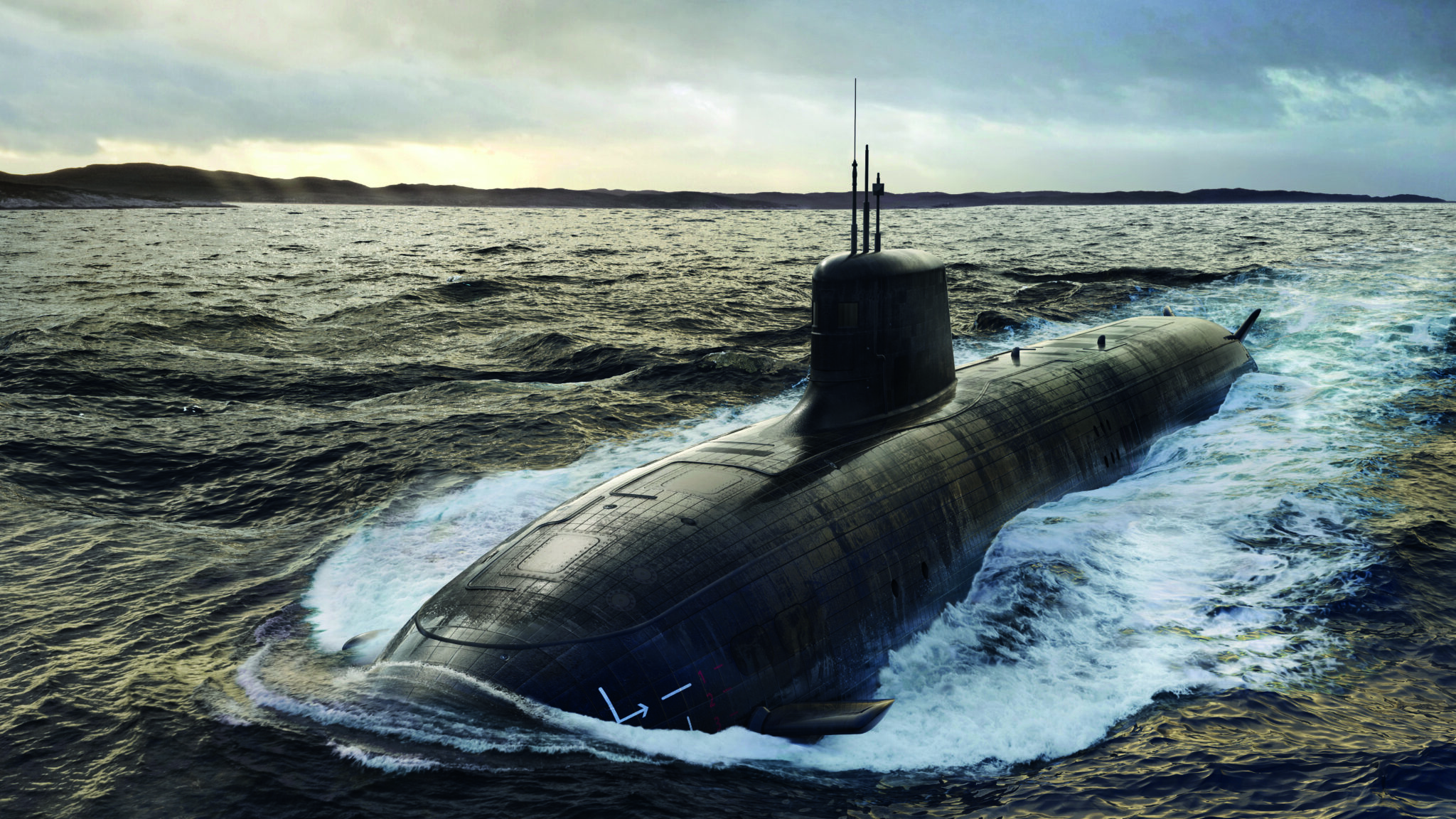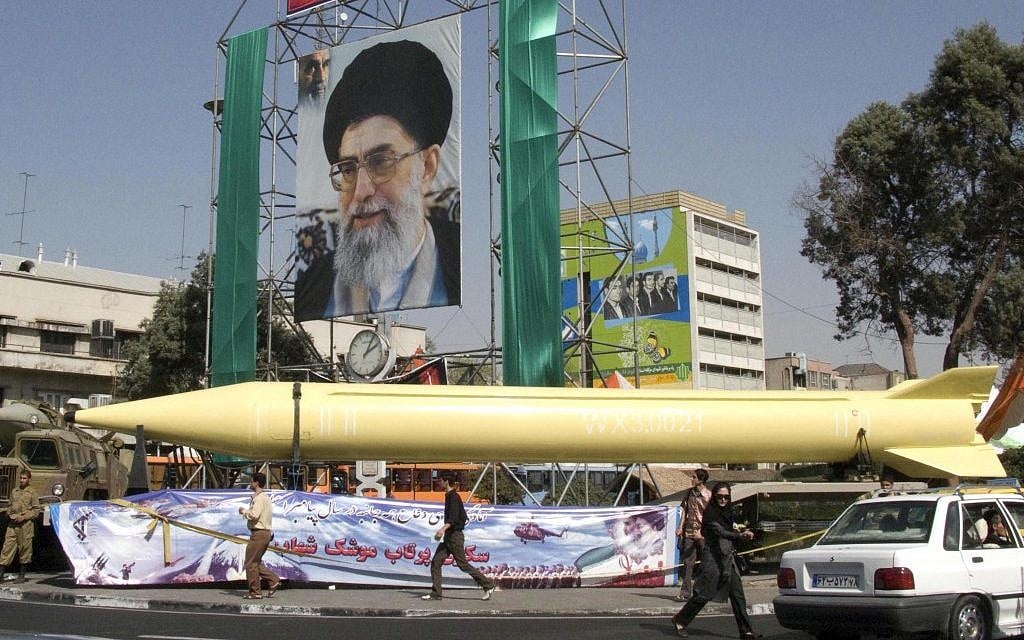Analyses
Comprehensive overview of current events and trends in the field of international security and international relations
The AUKUS Submarine Agreement and Russia’s Security Concerns
Mr. Vladimir Ladanov,
Minister-Counsellor, The Embassy of the Russian Federation in the Republic of India,
PIR Center Advisory Board Member since 2024
This article discusses the implications of AUKUS, a capability-building arrangement that envisages acquisition by Australia of nuclear-powered attack submarines (SSNs) with assistance from the United States and Britain, for Russia’s security, namely the safety of its submarine-based strategic nuclear deterrent operated by the Pacific Fleet from its base in Vilyuchinsk on the Kamchatka Peninsula.
Although the Trump administration had initially committed to continuing the implementation of AUKUS, uncertainty prevails not least because the Pentagon is now conducting its review led by Under Secretary of War for Policy Elbridge Colby. In March, at his Senate confirmation hearing Mr Colby did not sound very reassuring on AUKUS. While supporting the agreement in principle, he said that given the unfulfilled requirement of the US Navy for more SSNs, sharing them with Australia would depend upon restoring the capacity of America’s submarine industrial base. Pending conclusion of the review, assumptions in this article are based on the AUKUS roadmap, the Optimal Pathway, presented in March 2023.
If earlier Biden administration projections remain, in 2032 and 2035, the United States will sell two in-service Block IV Virginia-class SSNs to Australia, followed by a new Block VII boat in 2038. In the early 2040s, the Royal Australian Navy (RAN) should receive its first SSN-AUKUS class submarine designed by Britain and built in Adelaide, South Australia. Current Australian requirement is for eight submarines but the number may increase.
What this means in practical terms is that if the RAN’s force generation cycle complies with the “rule of three” (three vessels are required to reliably operate one), by the late 2030s it should be able to have one SSN consistently available for deployment.
Explaining a requirement for purchasing a squadron of SSNs, the government of Australia referred to the country’s deteriorating strategic environment and worsening regional security and stability. In these circumstances Canberra declared its intent to acquire enhanced defence capabilities to deter conflict and help ensure stability and strategic balance were maintained in the Indo-Pacific.
Describing Australia’s strategic landscape, Deputy Prime Minister and Minister for Defence, Richard Marles, chose to highlight China’s naval buildup and the importance of protecting Australia’s long sea lines of communication. However, that rationale was at odds with the submarines historically offensive role in executing a sea denial strategy. Current Collins-class conventional submarines were envisaged in the 1980s by the Keating government as part of the Defence of Australia strategy which focussed on protecting the sea-air gap to the north of the continent and guarding maritime chokepoints in the Indonesian archipelago that can be used by a hostile force to reach Australia.
Former Australian Prime Minister, Paul Keating, a critic of AUKUS, expressed his concerns in the following terms:
The whole point of these hunter-killer submarines is to round up the Chinese nuclear submarines and keep them in the shallow waters of the Chinese continental shelf before they get to the Mariana Trench and become invisible. In other words, to stop the Chinese having a second-strike nuclear capability against the United States. This is the game we’re now in. In the Collins game, we were in the defence of Australia. In the Virginia class game, we are hunter-killing Chinese submarines. This changes our whole relationship. (…) Australia is locking in its next half century in Asia as subordinate to the United States. And that approach was to have the United States supply nuclear submarines for deep and joint operations against China which supported the United States dominating East Asia (…) No (…) resort to softer or polite language will disguise from the Chinese the extent and intent of our commitment to United States’s strategic hegemony in East Asia with all its deadly portents.[1]
One of Australia’s prominent strategists, Professor Hugh White, expanded on
Mr Keating’s analysis:
AUKUS commits Australia to fight China if America does, simply because the AUKUS deal will be off if we don’t. That is because America will only sell us Virginia-class boats if absolutely certain that those boats would join US operations in any war with China. They will come straight out of the US Navy’s order of battle, because no extra Virginia-class boats are to be built to meet Australian needs. So, every boat that joins the RAN is one less in the US fleet, and the US Navy is already desperately short of submarines. It is simply inconceivable that Washington would agree to a significant diminution of its submarine capability in this way as its military rivalry with China escalates. (…) Unless Australia is willing to go to war with China, the whole AUKUS deal will not be in America’s interests.[2]
Australian Strategic Policy Institute, a Canberra think tank, presenting a national security establishment’s take on AUKUS characterised it as follows:
For Australia, the stated purpose is to respond to China’s rise, Beijing’s increased aggression and the revelation of Australia’s strategic deficit in a tough neighbourhood. But fundamentally, to achieve security, Australia has historically ‘band wagoned’ with one of the region’s great powers in support of a regional and global order balanced in Australia’s favour. (…) the AUKUS program will deter China from pursuing aggressive military options against Australia and will contribute to regional stability by helping to generate a balance of military power.[3]
While Australian debate is focussed on how a future SSN capability as a component of a US-led coalition may be utilised to deter China, it is also relevant to assess its implications for the safety of the Russian Navy’s strategic deterrent posture in the Far East.
The Russian Pacific Fleet’s nuclear-powered ballistic missile submarines (SSBNs) homeported in Vilyuchinsk, the Kamchatka Peninsula, together with their counterparts operated by the Northern Fleet serve as a seaborne leg of the national strategic nuclear deterrent force. Western experts estimate that as its modus operandi this force continues to pursue the Soviet Bastion strategy whereby SSBNs on deterrent patrols seek shelter from US/NATO antisubmarine forces by limiting their operating areas to the seas within easy reach of protective aerial, air-defence, surface and subsurface platforms. Accordingly, the Sea of Okhotsk became a bastion for the Pacific Fleet’s strategic deterrent. Such SSBNs and the Bastion concept came to be recognised in the West as the centrepiece of Russia’s survivable second-strike capability.
The Sea of Okhotsk as SSBN bastion has an advantage of being largely covered by ice for several months every year thereby protecting SSBNs lurking under it from detection and pursuit by maritime patrol aircraft, surface ships and their anti-submarine helicopters. During that period of the year, the greatest threat to SSBNs patrolling in the Sea of Okhotsk arises from hostile SSNs in the area.
In terms of threat assessment posed by Australia’s future SSN force, intent and capability should be examined. There is no need to say much about the hostility of the Australian establishment towards Russia. Since 2022, Australia’s successive cabinets of both denominations, Liberal / National and Labor, have been eager participants in a proxy war waged by the Western powers against Russia in Ukraine. Embracing American concept of great-power competition, Australia’s national security elite has put its foot on the accelerator of unbridled military integration with the United States. Evolving US Enhanced Force Posture Initiatives in Australia aim to “support high-end warfighting and combined military operations in the region”. Deputy Prime Minister and Minister for Defence, Richard Marles, was transparent about his enthusiasm for Australia being intermeshed operationally with the United States when he said:
We are making big investments in defence capital infrastructure to support, maintain and sustain the growing number of Australian and American forces. We will operationalise a regular presence and an increased exercise tempo. We will move beyond interoperability to interchangeability. And we will ensure we have all the enablers in place to operate seamlessly together, at speed.[4]
His words were echoed by the Biden administration’s Indo-Pacific Coordinator and key US official behind AUKUS, Kurt Campbell, who referring to Australia spoke of a “deeper interconnection, almost a melding of our services.”[5]
The corollary is that Australia’s deep state not only has a hostile demeanour towards Russia but it also works assiduously to integrate the Australian Defence Force with US military posture in the Indo-Pacific. At this stage it is difficult to ascertain with a good degree of confidence whether in the future that may translate into the RAN conducting combined operations with the US Navy against Russian SSBNs in the Far East, similar to how former Prime Minister Keating thinks they are going to act together against Chinese SSBNs. Nonetheless, such an option may not be discarded because a credible analysis must examine worst-case high-impact scenarios especially when the survivability of Russia’s second-strike nuclear force may be at stake.
Having looked at intent, it is now opportune to consider the RAN’s upcoming SSN capability from the angle of its damage dealing capacity.
Initially, all RAN’s SSNs will be based at HMAS Stirling south of Perth, Western Australia. A rough calculation of the route’s distance from Perth to Petropavlovsk-Kamchatsky and the time that it would take an SSN with an average quiet transit speed of 20 knots to cover it indicates that about two weeks after leaving the base it will arrive at the Avacha Bay or, alternatively, in the Sea of Okhotsk. Subtracting the same amount of time required for the return leg and allowing for a 70-day total patrol time consistent with international SSN standards, the RAN’s Virginia-class boat will have many weeks on station in this operationally sensitive area. If the RAN goes ahead with the Morrison government’s original plan and splits its future SSN squadron in two and moves half of it to a new base on the East Coast such as the short-listed Port Kembla, Newcastle or Brisbane, transit from there to Kamchatka will be shorter giving more time on station. From the vicinity of Vilyuchinsk, SSN’s operating mode will likely be to exploit the vulnerability of an SSBN exiting port by getting on the tails of the most threatening of the submarines and in war attacking submarines immediately on leaving their base, by either mines or torpedoes, or both.
While little detail is publicly available about Virginia-class Block VII features, Block IV design has two Virginia Payload Tubes placed in the bow, each for six Tomahawk Land Attack Missiles (TLAM). Assuming that conventionally armed TLAMs have a 1000-pound-class warhead and 2500 km range, that would be the distance from which the RAN’s SSN will be able to threaten the Pacific Fleet’s submarines stationed at their base in Vilyuchinsk with a 12-missile salvo delivering a truckload of high explosives to the target.
In addition to the base strike option, a hostile SSN with its crew well versed in under the ice operations and fitted out with ice navigation sensors is uniquely positioned to successfully penetrate the Sea of Okhotsk Bastion to seek out and shadow a patrolling Russian SSBN.
Summing up, intent and capability analysis demonstrates that from the late 2030s onwards the RAN’s SSN capability will be at the level to pose a serious risk to the survivability of the Russian Pacific Fleet’s strategic deterrent.
As the risk for Russia of potential US-Australia combined antisubmarine operations rises, Australia will have to face the consequences.
During the Cold War, as part of the alliance with the United States Australia hosted several US military facilities including North West Cape and Nurrungar but the most prominent of which was Pine Gap believed to have a major role in American signals intelligence and satellite surveillance operations. Its importance in the East-West confrontation was such that Australia’s leadership at that time was prepared to live with the knowledge that Pine Gap and other US facilities in Australia might be targeted relatively early in a strategic nuclear war. In 1981, Australian Parliament’s Joint Committee on Foreign Affairs and Defence in its report concluded that “it would be prudent for Australian defence planners to assume that the joint facilities (…) are on the Soviet target list and might be attacked in the course of the conflict between the two superpowers.”[6] Australia’s premier intelligence agency, the Office of National Assessments, anticipated that an attack on Pine Gap would take the form of “an air burst … perhaps involving detonation of about a one megaton warhead at an altitude of about 1000m to 1500m (…). An explosion at this altitude would maximise the area of blast damage on the ground, and hence minimise the effect of targeting inaccuracy.”[7] Australian establishment’s acceptance of such a scenario was possibly influenced by the fact that the facility was staffed mostly by American personnel, the nearby town of Alice Springs had few inhabitants and there was no significant human population for hundreds of miles around. But it may be a different matter and a different calculus if strategic risk rises significantly for future RAN’s SSN bases, HMAS Stirling near Perth, and Port Kembla / Newcastle in the Sydney area, or Brisbane.
It therefore should not be controversial if future Australian cabinets adopt a rational approach to addressing Russia’s concerns by implementing measures to reduce the chance of miscalculation, garbled reading of intentions and potentially inadvertent conflict arising from the RAN’s SSNs operating in a way that holds at risk SSBNs of the Russian Pacific Fleet. By doing so Australia will be serving its national interest best. Otherwise, strategic risk may become too high and potential cost too great.
For India’s security and defence posture, the implications of AUKUS deserve a more detailed study. New Delhi and Canberra enjoy a friendly relationship; there are frequent exchange visits by the military top brass and Australia welcomes India’s participation in its strategic level exercise Talisman Sabre that it conducts jointly with the United States. That being so, there is no guarantee that such a benevolent approach will last forever against the backdrop of shifting balances and allegiances in the Asia-Pacific. Australia’s former Deputy Secretary of Defence for Strategy, Hugh White, wrote about that in his book How to Defend Australia (2018):
China will be stronger, more able and more willing to contest US power, more able to project power over long distances, and more likely to use its own power, including armed forces, to impose its will on other countries. Looking further ahead, the same may become true of India too. We could align with one regional great power against another – with India against China, or with China against India. India looks much less threatening than China today (…) because it has not yet shown China’s strategic ambitions. It welcomes rather than opposes America’s strategic role in Asia, and thus supports rather than challenges the regional order that has underpinned Australia’s security for so long. But this may change as India’s wealth, power and ambitions grow. India does not yet appear to have the elements in place to drive the high levels of growth required to match China as an equal, but it will probably get there eventually, perhaps by mid-century. India might then become just as demanding a regional power as China. Many assume that India’s democratic traditions and its cultural affinities with us mean that it is much less likely than China to pose a future threat to us, but we cannot take that for granted. India, as its power grows, will deserve a prominent place in Australia’s strategic risk assessments.
In conclusion, it is relevant to point out that the distance from the Royal Australian Navy’s future nuclear-powered attack submarine base HMAS Stirling to the Russian SSBN base Vilyuchinsk is around 6280 nautical miles and SSN transiting to that destination at an average speed of 20 knots can spend 44 days on station in the area out of a total 70-day patrol time. The distance from Stirling to Visakhapatnam is around 4060 nautical miles and Australian SSN’s time on station in the vicinity of the Indian Navy’s SSBN base will amount to 53 days. It is prudent for India’s planners to be mindful of the implications of AUKUS and account for them in their risk assessment and plans.
[1] Paul K. It Would Make a Cat Laugh: Key Moments from Paul Keating’s National Press Club Appearance // The Guardian, 2021. URL: https://www.theguardian.com/australia-news/2021/nov/10/it-would-make-a-cat-laugh-key-moments-from-paul-keatings-national-press-club-appearance
[2] White H. AUKUS commits Australia to fight China if America does, simple // The Interpreter, 2023. URL: https://www.lowyinstitute.org/the-interpreter/aukus-commits-australia-fight-china-if-america-does-simple
[3] Brown G., Munro B., MacGillivray I. AUKUS is underway, but key challenges remain // The Strategist, 2023. URL: https://www.aspistrategist.org.au/aukus-is-underway-but-key-challenges-remain/
[4] The U.S.-Australia Alliance: Aligning Priorities in the Indo-Pacific with Deputy Prime Minister Richard Marles // CSIS, 2022. URL: https://www.csis.org/events/us-australia-alliance-aligning-priorities-indo-pacific-deputy-prime-minister-richard-marles
[5] Beyond AUKUS and the Quad: What’s Next for the U.S. Indo-Pacific Strategy // United States Institute of Peace, 2021. URL: https://www.youtube.com/watch?v=mmBRgv7WnYU
[6] Parliament of Australia. Threats to Australia’s security: their nature and probability // Joint Committee on Foreign Affairs and Defence, 1981. URL: https://apo.org.au/node/39901
[7] ONA’s 1981 study is quoted in Tom Gilling, Australia is Exposed to Nuclear Attack. The Australian, 10 September 2022.
This op-ed first appeared at the Vivekananda International Foundation on October 4, 2025.
Keywords: Nuclear Non-Proliferation; Global Security; Australia; AUKUS
NPT
E16/SHAH – 25/10/10








